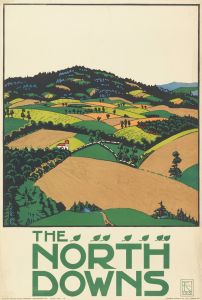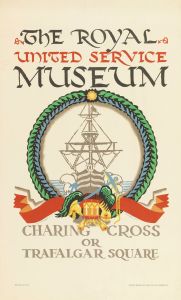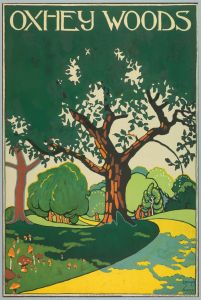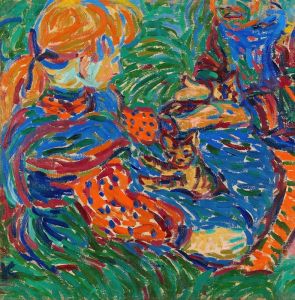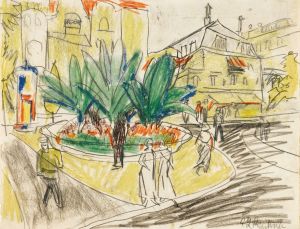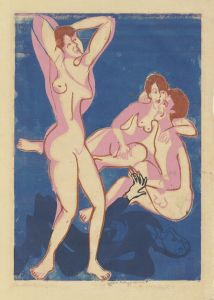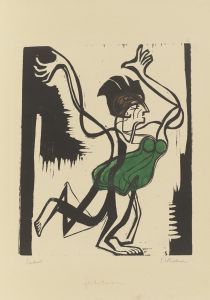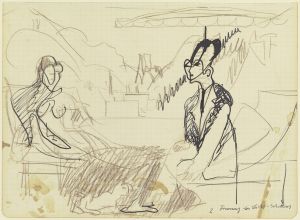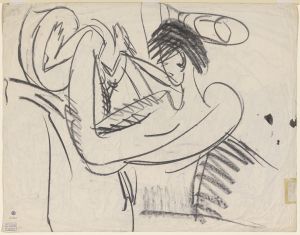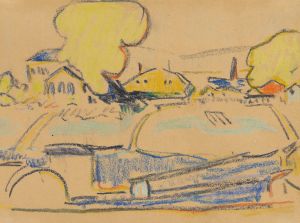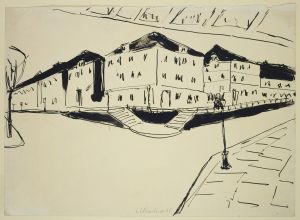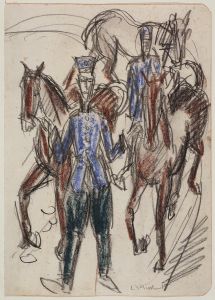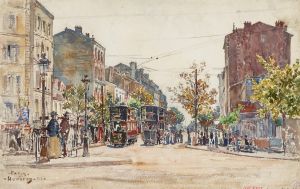
Stadtlandschaft mit zwei Straßenbahnen
A hand-painted replica of Ernst Ludwig Kirchner’s masterpiece Stadtlandschaft mit zwei Straßenbahnen, meticulously crafted by professional artists to capture the true essence of the original. Each piece is created with museum-quality canvas and rare mineral pigments, carefully painted by experienced artists with delicate brushstrokes and rich, layered colors to perfectly recreate the texture of the original artwork. Unlike machine-printed reproductions, this hand-painted version brings the painting to life, infused with the artist’s emotions and skill in every stroke. Whether for personal collection or home decoration, it instantly elevates the artistic atmosphere of any space.
"Stadtlandschaft mit zwei Straßenbahnen" (Cityscape with Two Trams) is a painting by the German expressionist artist Ernst Ludwig Kirchner. Kirchner was a leading figure in the early 20th-century expressionist movement, and he was one of the founding members of the influential artist group Die Brücke (The Bridge), which played a crucial role in the development of modern art in Germany.
Ernst Ludwig Kirchner was born on May 6, 1880, in Aschaffenburg, Bavaria, Germany. He studied architecture in Dresden, where he met fellow artists and co-founders of Die Brücke, such as Fritz Bleyl, Erich Heckel, and Karl Schmidt-Rottluff. The group was established in 1905 and sought to create a new form of artistic expression that bridged traditional and modern approaches. They were known for their bold use of color, expressive brushwork, and focus on urban scenes and the human figure.
"Stadtlandschaft mit zwei Straßenbahnen" is a quintessential example of Kirchner's work during his Berlin period, which began in 1911 when he moved to the city. This period was marked by a fascination with the dynamic and rapidly changing urban environment. Berlin, at the time, was a bustling metropolis and a hub of modernity, which deeply influenced Kirchner's artistic output.
The painting depicts a vibrant cityscape with two trams, capturing the energy and movement of urban life. Kirchner's use of vivid colors and dynamic composition conveys the sense of speed and modernity associated with city living. The trams, a symbol of technological advancement and urbanization, are central to the composition, emphasizing the theme of progress and change.
Kirchner's style is characterized by its emotional intensity and distortion of forms, which are evident in this painting. The figures and buildings are rendered in exaggerated, angular shapes, a hallmark of expressionism that reflects the artist's subjective experience of the world. This approach allows Kirchner to convey the psychological impact of the city on its inhabitants, highlighting feelings of alienation and excitement.
Throughout his career, Kirchner faced numerous challenges, including the impact of World War I and personal struggles with mental health. Despite these difficulties, he continued to produce a significant body of work that left a lasting impact on the art world. His contributions to expressionism and modern art have been widely recognized, and his works are held in major museums and collections worldwide.
"Stadtlandschaft mit zwei Straßenbahnen" exemplifies Kirchner's ability to capture the essence of urban life through his unique artistic vision. The painting not only reflects the socio-cultural context of early 20th-century Berlin but also showcases Kirchner's innovative approach to color, form, and composition. His work continues to be celebrated for its emotional depth and its role in shaping the trajectory of modern art.
Ernst Ludwig Kirchner's legacy as a pioneering expressionist artist endures, and his paintings remain influential in the study of modern art. "Stadtlandschaft mit zwei Straßenbahnen" stands as a testament to his skill in portraying the complexities of modern urban existence and his contribution to the evolution of artistic expression in the 20th century.





